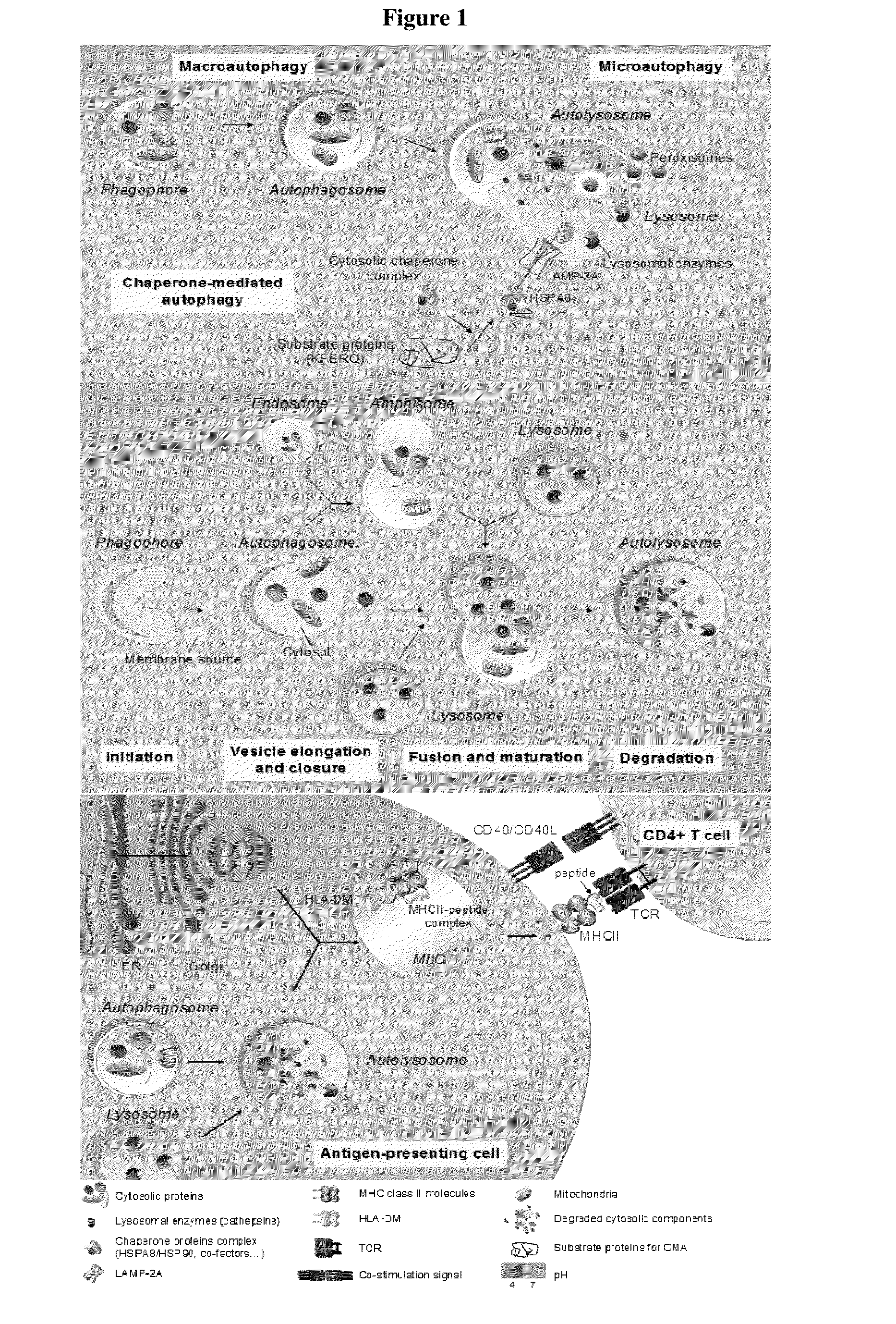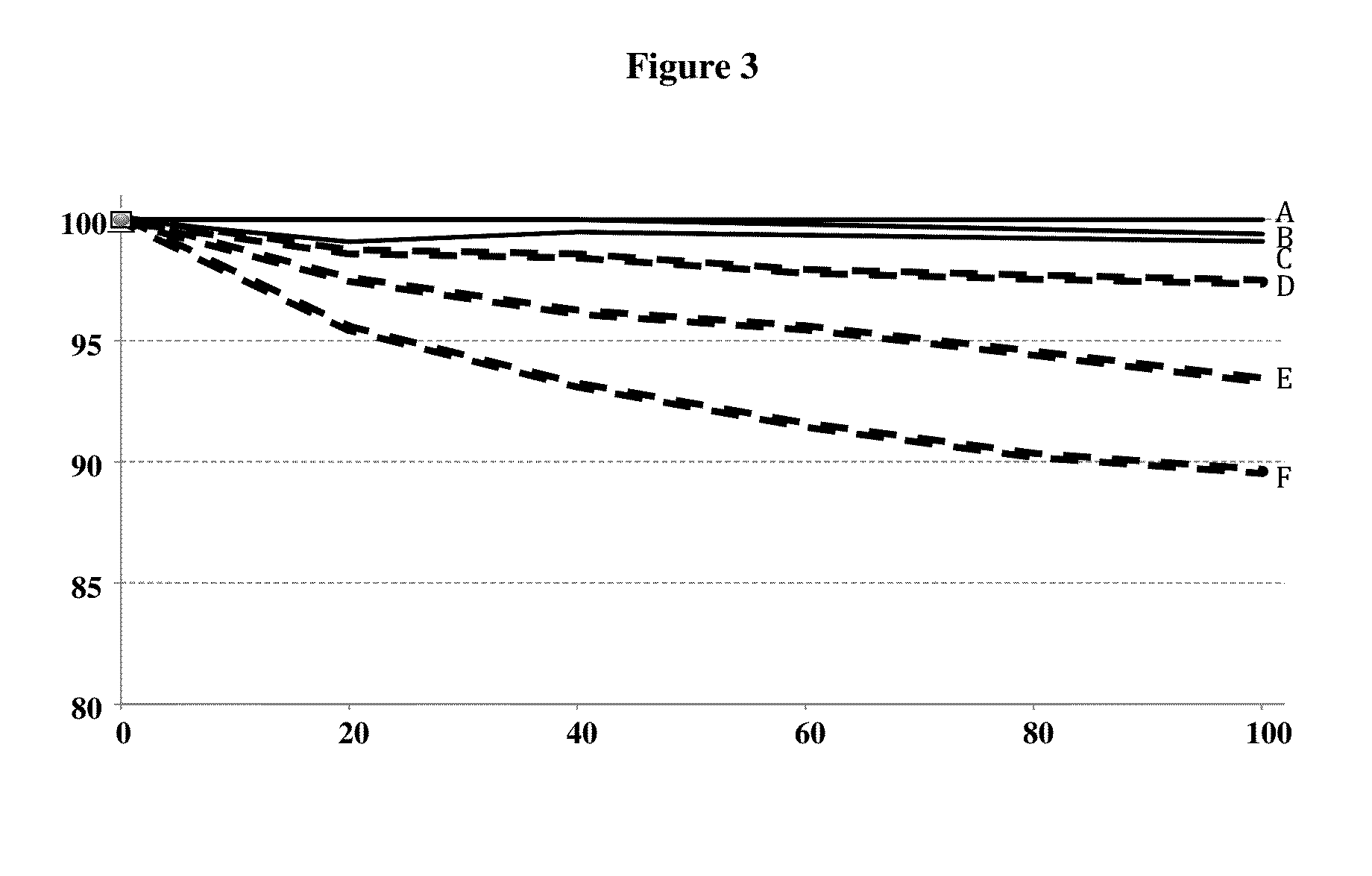Modified peptides and their use for treating chronic inflammatory diseases
a technology of inflammatory diseases and peptides, which is applied in the field of modified peptides and their use for treating immune diseases, can solve the problems of complex follow-up and treatment tasks, no known prevention for most autoimmune disorders, and no universal signature could be identified, so as to improve the effect of inflammatory disease, treatment, and preventing and/or ameliorating symptoms
- Summary
- Abstract
- Description
- Claims
- Application Information
AI Technical Summary
Benefits of technology
Problems solved by technology
Method used
Image
Examples
example 1
Chemical Synthesis of the Peptides
[0195]P1′peptide and P140(MO) were synthesized using classical Fmoc (N-[9-fluorenyl] methoxycarbonyl) solid-phase chemistry and purified by reversed-phase high-performance liquid chromatography (HPLC; Neimark and Briand, 1993; Monneaux et al., 2003, Eur. J. Immunol. 33,287-296; Page et al., 2009, PloS ONE 4,e5273). Their homogeneity was checked by analytical HPLC, and their identity was assessed by LC / MS on a Finnigan LCQ Advantage Max system (Thermo Fischer Scientific). After completion of the reaction, the peptides were purified by HPLC.
[0196]In order to introduce the phosphorylation at the serine residue equivalent to the residue 140 of SEQ ID NO: 3, an Fmoc-Ser(PO(Obz)OH)—OH-type serine derivative was used. The coupling time is increased to 30 minutes and a second coupling is carried out systematically. After cleavage in acid medium, each peptide is precipitated by cold ether, solubilized in a solution of water and acetonitrile and finally lyoph...
example 2
Therapeutic Effect of the Peptides in MRL / lpr Mice
[0205]MRL / lpr mouse strain is a mouse substrain that is genetically predisposed to the development of systemic lupus erythematosus-like syndrome, which has been found to be clinically similar to the human disease. It has been determined that this mouse strain carries a mutation in the fas gene. Also, the MRL / lpr is a useful model to study behavioural and cognitive deficits found in autoimmune diseases and the efficacy of immunosuppressive agents [Monneaux et al., 2003, Eur. J. Immunol. 33,287-296].
[0206]2.1-Survival Analysis
[0207]Five-week-old female MRL / lpr mice received P140 or peptide P140(MO) intravenously as described (Monneaux et al., 2003, Eur. J. Immunol. 33,287-296). All experimental protocols were carried out with the approval of the local Institutional Animal Care and Use Committee (CREMEAS). As control, mice were injected with NaCl.
[0208]Twenty mice were used for each peptide or NaCl.
[0209]The results are shown in FIG. 4....
example 3
Effect of P140 Peptide in RA.
[0225]In this example, a P140 peptide (21-mer linear peptide) encompassing the sequence 131-151 of the spliceosomal U1-70K protein and containing a phosphoserine residue at position 140, was tested. After P140 treatment, an accumulation of autophagy markers SQSTM1 and MAP1LC3 was observed in MRL / lpr B cells, consistent with a down-regulation of autophagic flux (Page et al., 2011). Chaperone-mediated autophagy (CMA) was also found to be a target of P140 peptide and it was demonstrated that P140 peptide inhibitory effect on CMA is likely tied to its ability to interact with HSPA8 chaperone protein (Page et al., 2009) and to alter the composition of HSPA8 heterocomplexes (Macri et al., in press). Expression of both HSPA8 and the limiting CMA component LAMP-2A, which is increased in MRL / lpr B cells, is down-regulated after treating mice with P140 peptide (Page et al., 2011; Macri et al., in press). It was shown further that P140, but not the non-phosphorylat...
PUM
| Property | Measurement | Unit |
|---|---|---|
| concentration | aaaaa | aaaaa |
| concentration | aaaaa | aaaaa |
| concentration | aaaaa | aaaaa |
Abstract
Description
Claims
Application Information
 Login to View More
Login to View More - R&D
- Intellectual Property
- Life Sciences
- Materials
- Tech Scout
- Unparalleled Data Quality
- Higher Quality Content
- 60% Fewer Hallucinations
Browse by: Latest US Patents, China's latest patents, Technical Efficacy Thesaurus, Application Domain, Technology Topic, Popular Technical Reports.
© 2025 PatSnap. All rights reserved.Legal|Privacy policy|Modern Slavery Act Transparency Statement|Sitemap|About US| Contact US: help@patsnap.com



